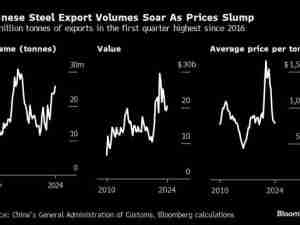Yuan Set to Halt Six-Week Tumble as China Seen Limiting Losses
By: Robin Ganguly | Jul 21 2016 at 10:18 PM | International Trade
The onshore yuan was set to end the year’s longest run of weekly losses, with suspected central bank support negating pressures from a strengthening dollar and prompting concern about China’s commitment to market forces.
The monetary authority fueled speculation that it was defending the currency from slipping past 6.7 per dollar by strengthening its daily fixing twice this week even as a gauge of the greenback advanced. Bets of intervention were boosted also as the yuan surged in afternoon trading on Tuesday and Wednesday, with Australia & New Zealand Banking Group Ltd. seeing the suspected intervention as an attempt to bolster the 4:30 p.m. rate that is used in the setting of the next day’s reference rate.
The signs of state meddling come amid increasing pressures on the currency, with Goldman Sachs Group Inc saying that the yuan’s declines affected sentiment and resulted in a significant pickup in outflows in June. The threat of capital flight unsettling financial markets is complicating China’s strategy of steadily weakening the yuan to combat a drop in exports as it looks to support growth in the world’s second-largest economy.
The yuan advanced 0.12 percent to 6.6687 a dollar as of 9:35 a.m. in Shanghai, according to China Foreign Trade System prices, after Monday dropping past 6.7 for the first time since 2010. The exchange rate is up 0.3 percent from July 15, after a six-week run of losses that saw it dropping more than 2 percent. The People’s Bank of China strengthened its fixing for the third day, after the dollar declined overnight following a four-day climb.
Thursday’s stronger fixing “drew a line in the sand just under 6.7, leading to a quick unwind of long dollar-offshore yuan positions,” Commonwealth Bank of Australia analysts wrote in a note. “Stability is likely to be the key ahead of this weekend’s G-20 meeting in China, while the PBOC seems to be reverting to its usual modus operandi of arbitrary fixing.”
The offshore yuan climbed 0.02 percent to 6.6724 a dollar, taking its advance for the week to 0.57 percent, the biggest gain since the period ended April 1. A Bloomberg replica of the trade-weighted CFETS RMB Index, which tracks the yuan against 13 currencies, surged 0.9 percent this week, the most in nine months. The yuan is officially referred to as the renminbi, which translates to “people’s currency.”
“The stabilization of the renminbi in recent days could be interpreted as partly driven by policymakers’ intention to strengthen sentiment in response” to outflows, Goldman analysts led by MK Tang wrote in a note dated July 21. “Although it is clearly still too early to conclude.”
Currency Test
China has intervened to prevent further yuan devaluation, which is different from intervening to promote a weaker exchange rate, a U.S. Treasury official told reporters in Athens. The test will be whether China allows the yuan to strengthen under upward market pressure, the official said.
While China has extended onshore yuan trading hours to 11:30 p.m., the central bank has said it would continue to view the 4:30 p.m. price as the closing level. Liquidity outside of regular Asia hours can be relatively poor, heightening the risk of unrepresentative exchange rates and manipulation, the PBOC said while announcing the extended trading hours in December.

